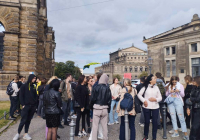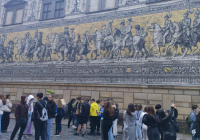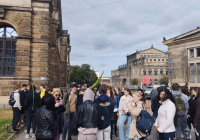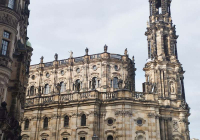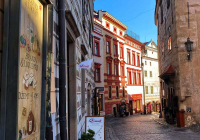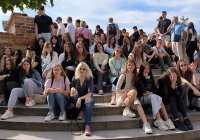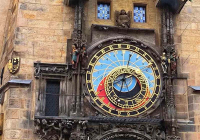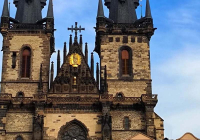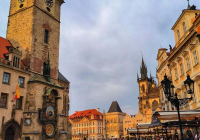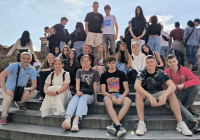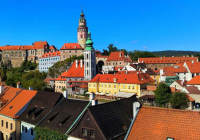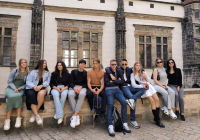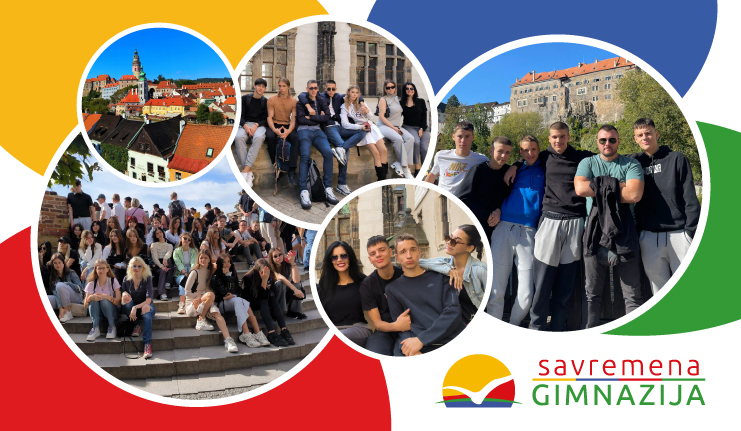
Third-grade students of Savremena Gimnazija have recently returned from an exciting study trip where they visited the Czech Republic and Germany.
The students were thrilled by the beauty of Prague
During their five-day stay, they had the opportunity to visit Prague, where they enjoyed the beauty that this city has to offer: Prague Castle with its accompanying courtyard complex, Hradčany, St. Vitus Cathedral, Golden Lane, Nerudova Street, Lesser Town Square, St. Nicholas Church, Lesser Town Tower, Charles Bridge, National Theatre, Old Town Tower, Klementinum, Old Town Square, the Town Hall and Orloj.
Prague, a city filled with beautiful, colourful buildings from various eras – from the Renaissance, through Baroque and Rococo, to 20th-century styles – perfectly restored and maintained, charmed the students with its allure. Romantic cobblestone streets, miraculously preserved despite the millions of tourists passing through them daily, vintage taxis and carriages you can ride through the city, are just part of this magical city.
After a panoramic city tour, the students, along with their teachers and guide, reached Prague Castle. The castle dates back to the 9th century, and over the centuries, as each ruler added their own touches, it quickly expanded into a massive complex, representing a blend of various architectural styles. The immense St. Vitus Cathedral, with its stunning exterior and awe-inspiring interior, left no one indifferent.
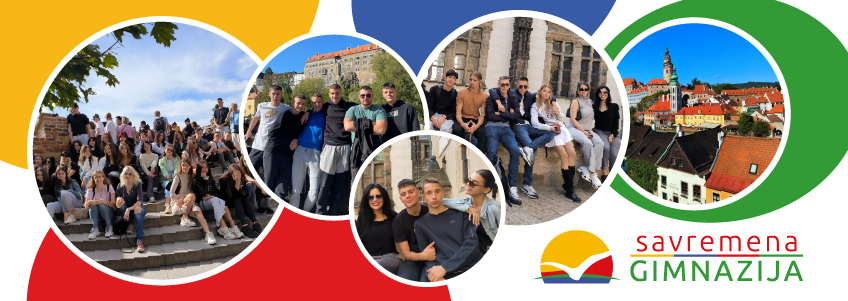
Following their visit to Prague Castle, the students continued to Charles Bridge, one of the most striking examples of High Gothic architecture and a masterpiece of Charles IV's reign. This spectacular bridge spans the Vltava River and connects the Lesser Town (Malá Strana) and the Old Town of Prague (Staré Město pražské).
In addition to numerous sights, Savremena students also saw the Astronomical Clock, the most famous astronomical clock in the world. It consists of four moving automatons (including the skeleton, which chimes every hour) and rotating statues of the 12 apostles. The clock displays Babylonian time, old Czech time, German time, and star time. It also shows the phases of the Moon and Sun and their journey through the zodiac constellations. A calendar is located right below the clock and shows the day of the week, month, holidays, allegorical figures for the current month, as well as zodiac signs. The background symbolises the Earth and the view of the night sky: the central blue circle represents the Earth, the upper blue circle is the part of the sky just above the horizon, and the red and black parts represent the sky far above the horizon. During the day, one of the rotating discs (the one symbolising the Sun) stands in front of the blue background, and during the night, it's against the black background.
Continuation of the study trip in the Czech Republic: Hluboka Castle and the Town of Krumlov
After exploring Prague, the following day, the students visited Hluboka Castle and the medieval town of Český Krumlov, which was built around the castle in the 13th-century. Český Krumlov is an exceptional example of a small medieval town whose architectural heritage remained untouched due to peaceful development over five centuries. Therefore, the historical centre of the town was included on UNESCO's list of World Cultural Heritage in 1992.
Hluboka Castle was declared a national cultural monument of the Czech Republic. It was built in the second half of the 13th century and underwent several renovations throughout its history. It was first expanded during the Renaissance period and later underwent a baroque renovation by order of Adam Franz von Schwarzenberg in the early 18th century. Its present appearance dates back to the 19th century when Johann Adolf II von Schwarzenberg ordered the castle to be rebuilt in a Romanesque style.
The beauties of Dresden enchanted our third graders
Savremena third graders continued their journey in Dresden, the capital of the German state of Saxony. They explored cultural landmarks such as the Semperoper Opera House, which is among the most beautiful in the world, and the Dresden Castle from the 15th century, which served as the seat of dukes, princes, and kings. The architectural masterpiece known as the Crown Gate at one of the entrances to the city walls allowed breathtaking views of the castle and its surroundings from the city's ramparts. From the parks of Brühl's Terrace, nicknamed the "Balcony of Europe", the students enjoyed magnificent views of the Elbe River and the new town on the opposite side, surrounded by impressive buildings like the Academy of Fine Arts and the Albertinum.
After five days in the Czech Republic and Germany, Savremena third graders, accompanied by their class teachers, returned to the capital of Serbia, brimming with wonderful memories and planning when they would visit these wonderful places again.

